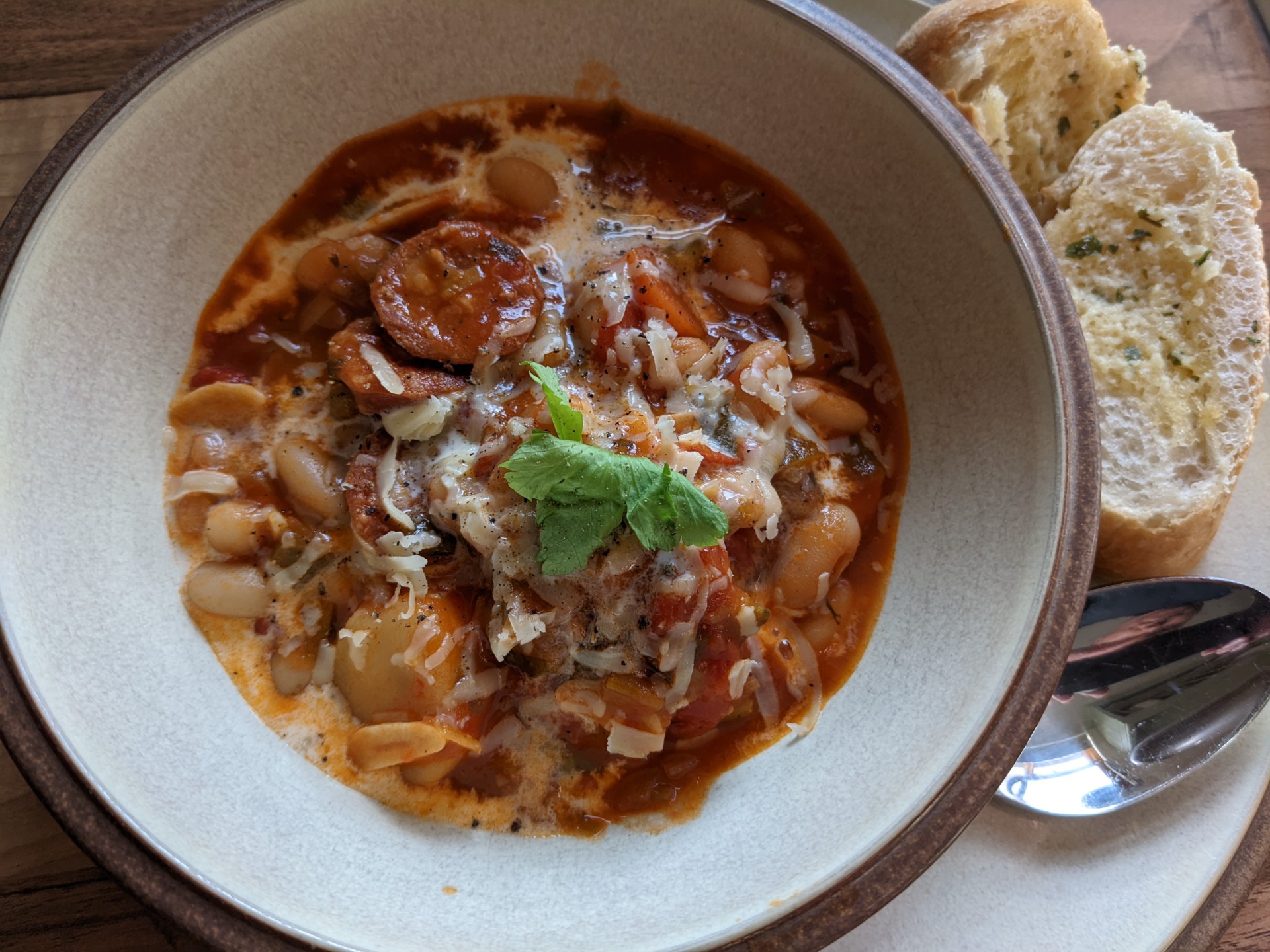No-one is born a good cook. Gastronomic excellence is not a congenital skill. Good techniques in the kitchen are not achievable from moment one.
It is therefore only through practice and patience and perseverance that a novice cook can one day create a magnificent dish.
There can be untapped talent, of course. Although said talent still needs tapping. The same way that a person can be naturally musical, unless that inert gift is coaxed out, stroked and honed, it will never be anything else other than inertia.
I remember as a child loving garlic bread. I also loved mustard. One fateful day I decided to sneak some wholegrain mustard onto the Sunday garlic baguette.
“What the hell happened to this bread?” my father cried in dismay, half way through his Sunday dinner.
“Dunno,” I attempted. “It must be blue-mouldy or suhin.”
This was my very first attempt at innovation and also my first culinary failure.
It was a lesson I have never forgotten, mainly because I wanted the garlic bread to be more than it was but in reality, it was a taste much diminished.
However the silver-lining in this situation was: I could taste that the mustardy garlic bread didn’t work which is to say, I had the beginnings of a palate.
Fast-forward three and a bit decades and this novice cook is still learning, though thankfully, the good dishes far outnumber the disasters. In fact, it is the learning that keeps me on my toes. It makes me want to experience new tastes and textures. It makes me more inclined to experiment. And it makes my weekends in the kitchen so much fun.
Another obvious upside about learning to cook is: We all have to eat. So you might as well do your best to create something which is as tasty to eat. The knock-on effect of that of course, is that the more practice we undertake in the kitchen, the better we become. It makes sense.
I remember as a teenager making a shepherd’s pie for the first time. I love shepherd’s pie and I wanted this to be the best shepherd’s pie ever visited by a human’s mouth. On that fateful day I attempted the mission with as much shepherd’s pie experience as a dyed-in-the-wool vegetarian. Come to think of it, that ‘vegetarian’ description is too kind to me.
At least a vegetarian would have known how to chop carrots without cutting their hands. I, on the other bloody hand, did not.
On the evening in question, after an hour and a half’s swearing in the kitchen, the fingers of my left hand covered in sticky plasters, the hob covered in burnt mince and with mash potatoes on the kitchen window (I had lost the rag at one point and fired the sticky mash at the window), I finally had a pie worth serving up.
I had learned several good lessons that day (knives are sharp, mash is sticky, mince can burn) and although it was generally traumatic, it was all part of a learning curve.
I also learned that no matter how much you curse and fire stuff about, it isn’t going to make the process any easier. And so it goes…
Fast-forward many moons later and one of this novice cook’s favourite things in the kitchen is making stuff up.
Once you galvanise a few skills and once you know your way around some flavours and the more time you spend experimenting, the easier it is to make dishes that you’ve never had before and in point of fact, the easier it is to create dishes and innovate without referring to recipes.
Take the bowl of stuff in the picture.
That’s a chorizo and cannellini bean stew and I fired it up one night that I needed an accompaniment for some cod fillets. The thinking was: I could make the stew and when it was ready, I’d nestle the fillets on top, stick a lid on and finish the
cooking of the fish via steaming in the oven.
I’d never made such a stew before but my gut instinct told me that it would work with meaty white fish. I also reckoned it would be handy to make and so I set about the task at hand, sans recipe and sans fear.
The result was a stew of such delicious depth and savouriness, that I forewent the cod altogether (don’t worry, I didn’t throw it out – I made a fishy mash the following day). All the stew required was some garlic bread (without the mustard), a little drizzle of cream, a pinch of grated cheddar and a big spoon. Joy to the world! It was exciting to make as I’d never done it before and it was doubly satisfying because it tasted like Andalusian heaven on a plate – or in this case a bowl.
The moral of this winding tale (if there is one) is that we shouldn’t be afraid to wing it from time to time. It’s good fun.
But the key is, practice makes perfect.
• If you’d like the recipe for the chorizo and cannellini bean stew just drop me an email at m.devlin@wearetyrone.com
‘I remember as a teenager making a shepherd’s pie for the first time. I love shepherd’s pie and I wanted this to be the best shepherd’s pie ever visited by a human’s mouth’







